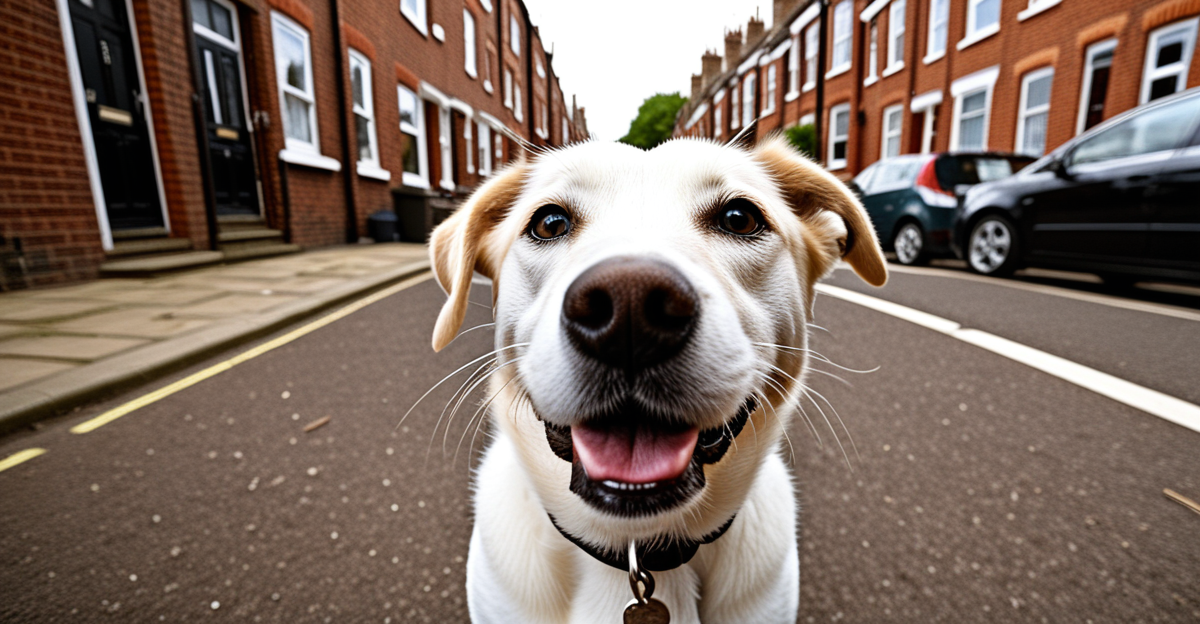Pet Ownership Trends and Demographics in UK Urban Areas
Understanding pet ownership UK patterns in cities reveals that urban dwellers increasingly embrace pets as companions. Data shows dogs and cats dominate urban pet populations, but smaller animals like rabbits and birds also hold popularity due to space constraints. Urban pet trends point to a rise in pet adoption in flats and apartments, reflecting shifts in housing types and lifestyles.
Demographically, young professionals and families living in multi-occupancy households are the main pet owners in cities. Households with children tend to prefer dogs, while single occupants or couples often choose cats for easier maintenance. Renters face unique challenges due to housing policies, yet many still prioritize having pets, influencing city pet demographics across age groups and living arrangements.
In the same genre : Is Owning a Pet in the UK Right for Your Lifestyle?
Housing status crucially impacts pet ownership. Flats with limited outdoor access prompt owners to select pets suited to confined spaces, shaping urban preferences. This demographic data underscores how socio-economic factors, household size, and urban housing stock interplay to shape pet ownership UK-wide. These patterns offer insight into how pets adapt to and enrich city life despite urban living’s spatial limits.
Pet Ownership Trends and Demographics in UK Urban Areas
Patterns of pet ownership UK in urban areas reveal sustained growth, driven by shifting lifestyles and housing constraints. Dogs and cats remain the most popular choices, but urban pet trends also include an increase in smaller pets like rabbits and birds, favored by those living in flats with limited space.
In parallel : How Can UK Pet Owners Reduce Their Environmental Pawprint?
Demographic analysis highlights that younger adults and families with children form the core of city pet owners. In particular, single adults and couples tend to prefer cats due to their adaptability to smaller homes, while families often lean towards dogs for companionship and outdoor activity. Socio-economic status influences ownership: renters face more restrictions but are an increasingly significant portion of city pet demographics, reflecting a growing demand for pet-friendly housing.
Housing status is pivotal in shaping urban pet trends. Limited outdoor access and space compel owners to select pets with specific behavioural and exercise needs suitable for confined environments. These patterns underscore how pet ownership UK evolves in response to urban living pressures, blending demographic factors, lifestyle choices, and housing availability to define the contemporary urban pet landscape.
Pet Ownership Trends and Demographics in UK Urban Areas
Urban pet trends continue to evolve as pet ownership UK adapts to city lifestyles. Dogs and cats remain the most popular, reflecting their adaptability to diverse living spaces. However, smaller pets like rabbits and birds are increasing due to limited outdoor access, fitting better into compact homes. These preferences directly influence city pet demographics, illustrating how housing conditions shape ownership choices.
Demographically, younger adults and families dominate urban pet ownership. Young professionals often prefer cats for their independent nature, while families with children lean towards dogs, valuing companionship and activity. Multi-person households are more likely to own pets than single occupants, revealing variations tied to household composition. Additionally, renters navigate unique challenges imposed by housing policies, yet many persist in maintaining pets, highlighting their importance in urban life.
Income levels and housing status also affect pet types and numbers. Higher-income households report owning multiple and larger pets, whereas those in smaller or rented flats opt for smaller animals. Overall, urban pet trends reflect complex socio-economic and lifestyle factors influencing pet ownership UK, revealing a nuanced portrait of how city dwellers integrate pets into their daily lives.
Pet Ownership Trends and Demographics in UK Urban Areas
Urban pet trends in the UK showcase distinctive patterns shaped by lifestyle and housing. Pet ownership UK in cities predominantly features dogs and cats, reflecting their adaptability to various urban living conditions. However, smaller pets such as rabbits and birds are increasingly chosen due to space limitations in flats and apartments.
City pet demographics reveal that age and household type heavily influence pet choices. Younger adults and single-person households frequently opt for cats, valuing their low-maintenance nature and suitability for smaller homes. Families, especially those with children, prefer dogs, appreciating their role in enhancing outdoor activities and social engagement. Renters, despite facing housing restrictions, remain a significant demographic within urban pet ownership, driving demand for more pet-friendly accommodation.
Housing status strongly affects pet ownership decisions. Limited outdoor access steers owners toward pets that require less exercise or adapt easily to indoor environments. This demographic interplay between age, household form, and housing type defines urban pet trends in the UK. Understanding these factors provides clarity on how city dwellers balance pet needs with the constraints of urban living, shaping a unique pet ownership landscape across British cities.
Pet Ownership Trends and Demographics in UK Urban Areas
Urban pet trends in the UK reflect evolving pet ownership UK patterns shaped by lifestyle and housing dynamics. Dogs and cats dominate, yet smaller pets like rabbits and birds have grown in popularity due to constrained living spaces. This shift underscores the importance of choice aligned with available indoor and limited outdoor environments in cities.
Within city pet demographics, young adults and families are predominant pet owners. Age, household size, and housing tenure strongly influence pet types: single people often prefer cats for their independence, while families favor dogs for active companionship. Renters face more barriers due to housing rules, yet many persist with pet ownership, evidencing a high value placed on animals as household members.
Socio-economic factors also play a decisive role. Higher income groups tend to own multiple pets and larger breeds, whereas flat dwellers gravitate towards smaller animals to suit spatial restrictions. Comprehending these demographic subtleties helps explain urban pet trends that balance pet preference with practicalities of city living, highlighting how pet ownership UK continues adapting to diverse urban contexts.
Pet Ownership Trends and Demographics in UK Urban Areas
Urban pet ownership UK reflects notable variation influenced by age, household type, and housing status. Younger adults and single occupants commonly select cats, appreciating their low-maintenance nature and adaptability to smaller flats. Conversely, families prefer dogs, valuing their role in promoting outdoor activities and social interactions. These demographic trends illustrate how personal circumstances guide pet choices within cities.
Housing status significantly shapes urban pet trends. Renters often navigate restrictions on pet types and numbers imposed by landlords, yet continue to prioritize owning pets, prompting demand for pet-friendly accommodation. Homeowners typically have fewer constraints, allowing for larger or multiple pets. Limited outdoor access in many urban residences steers owners toward smaller or less exercise-intensive animals, further defining city pet demographics.
Popular pets in urban areas extend beyond cats and dogs to include rabbits, birds, and other small mammals. Their suitability for indoor living and compact spaces makes them attractive to city dwellers facing spatial restrictions. Overall, the interplay of age, household composition, and housing realities governs the evolving landscape of pet ownership UK in urban settings.
Pet Ownership Trends and Demographics in UK Urban Areas
Patterns of pet ownership UK in cities reveal a clear preference for adaptability and practicality. Dogs and cats dominate due to their compatibility with varied living spaces, but urban pet trends also show rising ownership of smaller animals like rabbits and birds. These pets fit well within the confines of flats where outdoor access is limited, reflecting residents’ need to balance companionship with space constraints.
Examining city pet demographics, age and household composition are decisive factors. Younger adults and single-person households frequently select cats, valuing their low-maintenance nature. Families tend to prefer dogs, as they provide active companionship and encourage outdoor activities, which remain important despite urban restrictions. Housing tenure further influences choices: renters often navigate more complex regulations yet persist in pet ownership, contributing significantly to urban pet populations.
Income levels and housing type shape pet variety and numbers. Higher-income households may own multiple or larger pets, while those in smaller or rented flats typically opt for smaller animals. This demographic interplay demonstrates how urban pet trends in the UK are intricately linked to lifestyle, economic status, and the practical realities of city living, crafting a diverse and evolving urban pet landscape.
Pet Ownership Trends and Demographics in UK Urban Areas
Urban pet ownership UK reflects complex dynamics shaped by age, household type, and housing status. Younger adults frequently favour cats, appreciating their low-maintenance nature and adaptability to limited space. Families tend to select dogs, valuing companionship and opportunities for outdoor exercise. These patterns are central to understanding urban pet trends.
Housing status strongly influences the kind and number of pets owned within cities. Renters often face restrictions from landlords on pet types and quantities, yet remain actively engaged in pet ownership, driving demand for more flexible, pet-friendly tenancy agreements. Homeowners generally experience fewer limitations, enabling ownership of larger pets or multiple animals.
Popular pets in city settings include not just dogs and cats but also smaller mammals like rabbits and birds, which suit confined living spaces and indoor lifestyles. This diversification of pets corresponds closely to the realities of urban housing and the preferences of different demographic groups.
Analysis of city pet demographics demonstrates how these factors interconnect, revealing how socio-economic and lifestyle considerations combine to shape pet ownership outcomes in urban areas of the UK. This comprehensive view highlights the adaptability of pet owners to diverse living environments, influencing evolving urban pet trends.
Pet Ownership Trends and Demographics in UK Urban Areas
Urban pet ownership UK patterns reflect clear preferences shaped by residents’ lifestyles and living conditions. Dogs and cats dominate due to their adaptability, but increasing numbers of city dwellers also opt for smaller pets like rabbits and birds. These choices align with limited space and the need for pets suited to confined environments, illustrating core urban pet trends.
In examining city pet demographics, age and household type emerge as significant factors. Younger adults and single-person households frequently select cats for their ease of care and independence, while families with children often prefer dogs, appreciating their role in active companionship. Housing status further influences ownership: renters face restrictions that affect pet types but remain committed owners, fostering demand for pet-friendly urban accommodations.
Additionally, socio-economic factors impact pet ownership numbers and variety. Higher-income households in cities tend to have multiple or larger pets, whereas residents in smaller flats prioritize animals compatible with limited space and exercise needs. Understanding these demographic nuances provides valuable insight into how urban pet trends evolve, blending personal preference with practical constraints to shape contemporary urban pet ownership in the UK.
Pet Ownership Trends and Demographics in UK Urban Areas
Urban pet ownership UK patterns illustrate how diverse living situations influence pet selection. Dogs and cats dominate because of their versatility across different home sizes and lifestyles. However, smaller pets such as rabbits and birds align well with limited space, explaining rising urban pet trends. These animals require less exercise and adapt easily to indoor living, making them practical choices in compact city environments.
Key factors within city pet demographics include age, household composition, and housing tenure. Younger adults often prefer cats due to their independence and low-maintenance nature, suiting busy urban routines. Families usually favour dogs to support active lifestyles and outdoor engagement. Renters face unique challenges, with landlords’ restrictions shaping pet types and ownership frequency; still, many renters maintain pets, emphasizing their value in urban wellbeing.
Housing status also profoundly impacts pet ownership. Homeowners tend to have fewer restrictions, allowing larger or multiple pets, whereas flat dwellers commonly select smaller animals due to limited outdoor access. Income influences pet variety, with higher earners more likely to own multiple or larger breeds. Understanding these intertwined factors within urban pet trends offers insight into how city dwellers adapt pet ownership to the realities of urban life.




